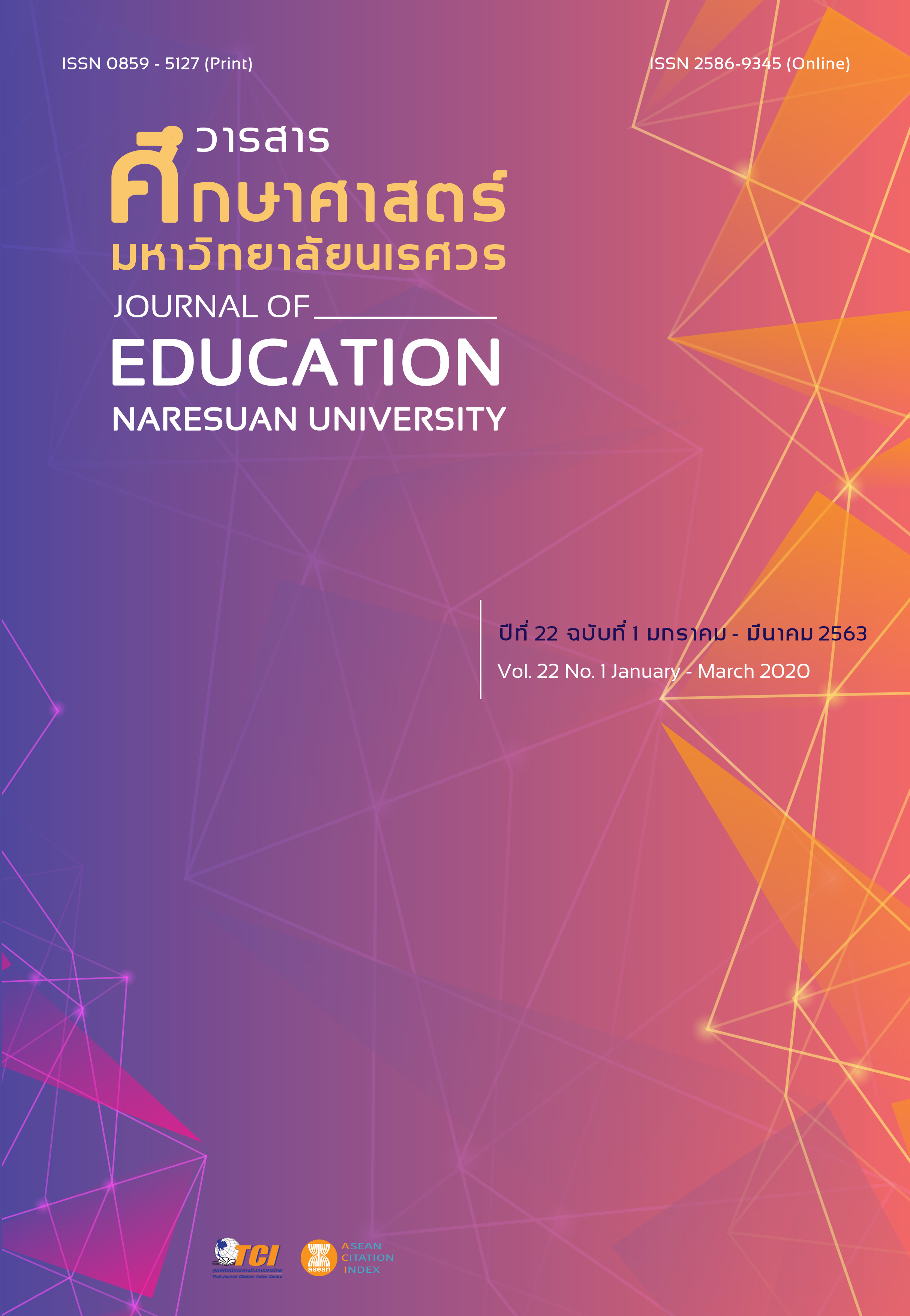DESIGN THINKING PROCESS TO CREATE INNOVATIVE ART EXPRESSION
Main Article Content
Abstract
Education management focuses on how rapid human being could be able to adapt to changes. The main focus would based on creativity and innovation which allow student to come up with new solution to improve things and expectedly lead to economic and social development. This being said, it is undeniable that practical art plays a vital role in creating support in creative thinking. The art of design thinking process is the integration between art activities and design thinking process. The main objective is to encourage student to explore new pattern and/or method of transferring artistic experiences into the art which it could escort in the discovery of innovative art expression skills. These are subjected to inquiry-based instruction, thinking-based instruction and group process-based instruction, which illustrate an art object to create a curiosity that could stimulate their thinking to enhance the recognition and understanding perfectly. The teamwork creation and testing a protocol could build innovative, artistic expression that aligned with changes and social expectations which aimed at innovation, support economic growth through art activities. The lessons including 1) providing an experience to stimulate thinking, 2) brainstorm for the best solutions and portray in an art piece, 3) creation allows student to do, and 4) a presentation to public and listening to all feedbacks received.
Article Details
The owner of the article does not copy or violate any of its copyright. If any copyright infringement occurs or prosecution, in any case, the Editorial Board is not involved in all the rights to the owner of the article to be performed.
References
Asia Society. (2017a). Advancing 21st century competenies in Singaporn. Center for Global Education.
Asia Society. (2017b). Advancing 21st Century Competenies in Japan. Center for Global Education.
Carleton University. (2019). Arts-based learning. Retrieved from https://carleton.ca/experientialeducation/?p=255
Chemi, T. & Du, X. (2017). Art-based method in education around the world. River Publishers.
Chitrakorn, A. (2016). Arts-based learning to enhance creativity of learners in 21st century. Journal of Education, Silpakorn University, 14(1), 60 – 73.
Cho, J. & Huh, J. (2017). New education policies and practices in South Korea. Retrieved from https://bangkok.unesco.org/content/new-education-policies-and-practices-south-korea
Dam, R., & Siang, T. (2019). What is design thinking and why is it so popular? Retrieved from https://www.interaction-design.org/literature/article/what-is-design-thinking-and-why-is-it-so-popular
Depracha, S. (1996). Art and human. Phitsanulok: Srinakharinwirot University. [in Thai]
Henriksen, D. (2017). Creating STEAM with design thinking: Beyond STEM and arts integration. The STEAM Journal, 3(1), Article 11.
Hobcraft, P. (2017). Improving the potential for innovation through design thinking. HYPE.
Khammani, T. (2015). Teaching science: Knowledge for effective learning process management (19th ed.). Bangkok: Chulalongkorn University Press. [in Thai]
Lahey, J. (2017). How design thinking became a buzzword at school. Retrieved from https://www.theatlantic.com/education/archive/2017/01/how-design-thinking-became-a-buzzword-at-school/512150/
NEA. (2010). Preparing 21st century students for a global society. Retrieved from https://www.nea.org/tools/52217.htm
Office of the Education Council. (2017). National Education Plan 2017 – 2036. Bangkok: Prikwarn Graphic. [in Thai]
Panich, V. (2012). The way of learning for students in the 21st century. Bangkok: ThaiSSF. [in Thai]
Pichayapaiboon, P. (2018). Psychology of art: The empirical aesthetics (2nd ed.). Bangkok: Chulalongkorn University Press. [in Thai]
Pichayapaiboon, P. (2019). Aesthetics in art education (6th ed.). Bangkok: Chulalongkorn University Press. [in Thai]
Plattner, H. (2010). An introduction to design thinking process guide. Retrieved from https://dschool-old.stanford.edu/sandbox/groups/designresources/wiki/36873/attachments/74b3d/ModeGuideBOOTCAMP2010L.pdf
Seifter, H. (2016). Proof of impact: Arts-based learning leads to improvements in creative thinking skills, collaborative behaviors and innovative outcomes. The Art of Science Learning. Retrieved from https://www.artofsciencelearning.org/phase2-research-findings
Sinlarat, P. (2015). The skills of the 21st century must step away from the trap of the west (7th ed.). Bangkok: Chulalongkorn University Press. [in Thai]
Soonpongsri, K. (2015). Modern art (2nd ed.). Bangkok: Chulalongkorn University Press. [in Thai]
Supprung, J. (2005). Art design principles. Bangkok: Suan Sunandha Rajabhat University. [in Thai]
Sutthirat, C. (2015). 80 innovative instructions (6th ed.). Bangkok: Thai Wattana Panich. [in Thai]
Trilling, B., & Fadel, C. (2009). 21st century skill: Learning for life in our time. San Francisco, CA: John Wiley & Sons.
Vanada, D. (2014). Practically creative: The role of design thinking as an improved paradigm for 21st century art education. Techne Series, 21(2), 21 – 33.


